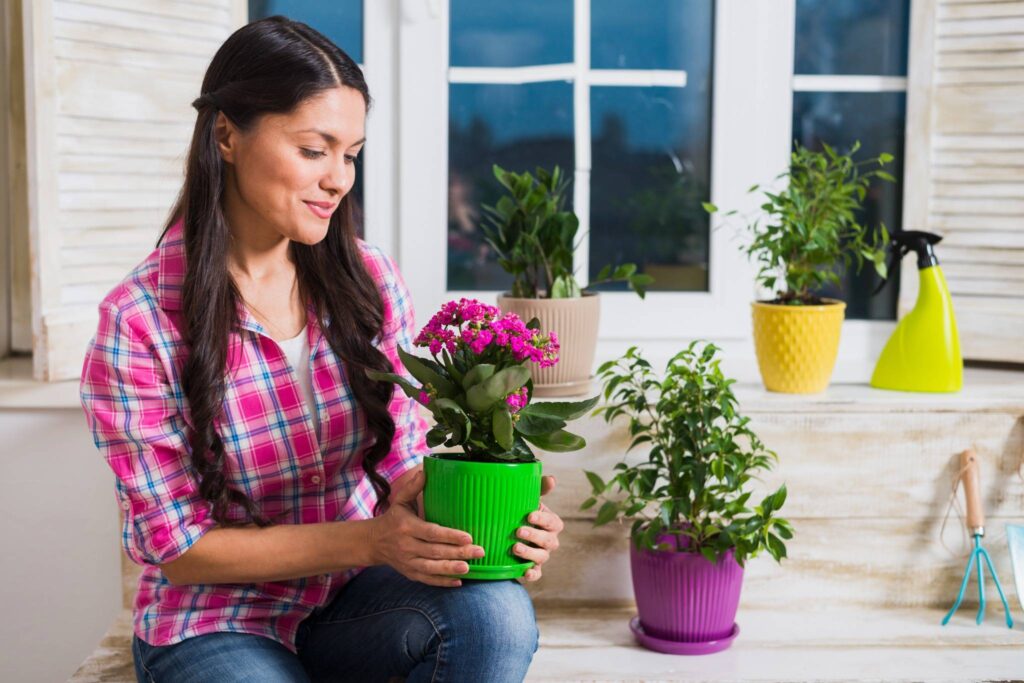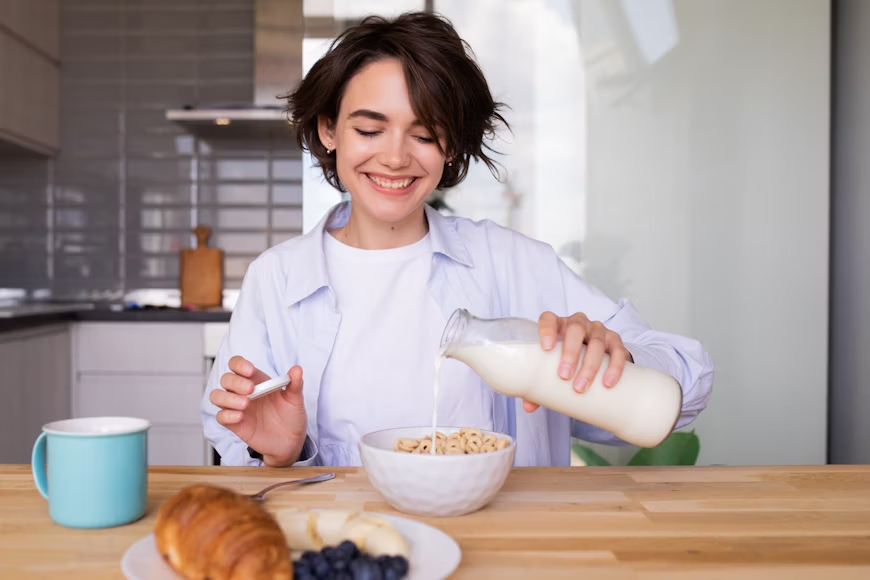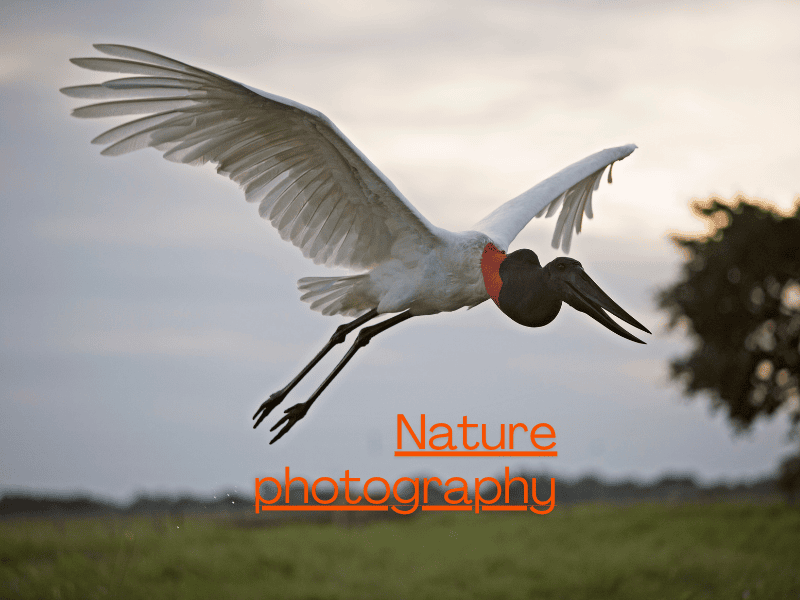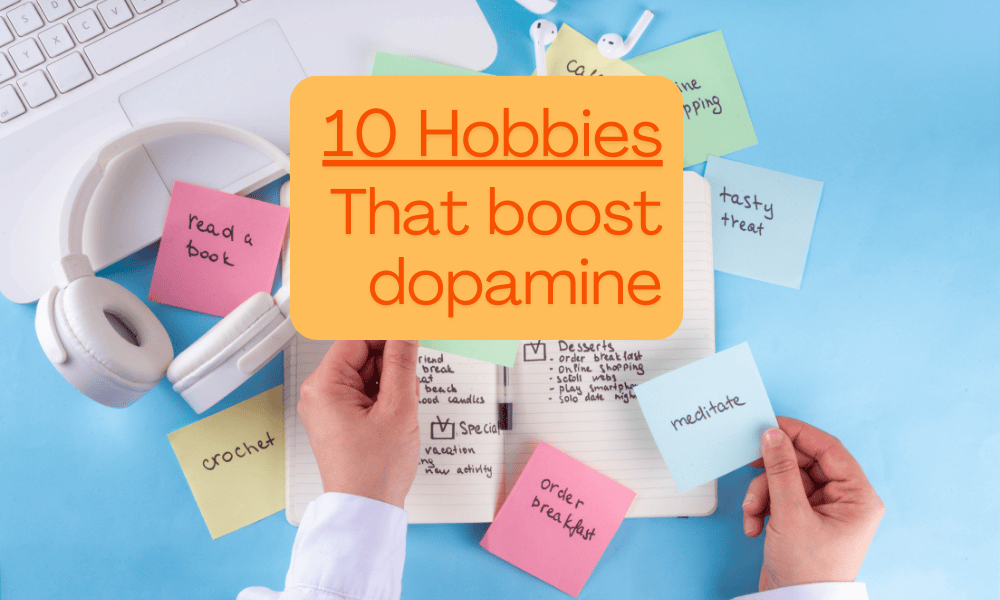Over the past year, as my motivation dipped and focus struggled, especially with handling adult ADHD, I embarked on a personal experiment to find hobbies that boost dopamine naturally. I combed through studies on neurotransmitters, talked to mental health professionals, and most importantly, tried various activities myself to see what worked.
According to Harvard Health, dopamine plays a key role in motivation, focus, and even how much joy we feel in everyday life.
Here are the 10 hobbies that boost dopamine I discovered through this journey. These activities not only lifted my mood but also improved my focus and energy levels in ways I hadn’t expected. You will also discover how to trigger dopamine fast, natural ways to increase dopamine (especially helpful for women and those with ADHD), and which combinations work best for different situations.
What surprised me most was how simple shifts in my weekly routine could create such significant changes in my mental state. Some activities provided instant mood lifts, while others built long-term strength and satisfaction.
Short summary
- This article explores 10 dopamine-boosting hobbies tested in real life to improve energy, focus, and happiness.
- What you’ll learn: how dopamine works, fast mood-lifters (dance, photography), and steady-build options (gardening, music, languages).
- Who benefits most: women juggling multiple roles and ADHD brains needing structure + novelty.
- How to start: pick one hobby you enjoy, do it for 2 weeks, track mood/energy (1–10), and adjust.
- Pro tips: combine activity + nutrition (protein, bananas, almonds, dark chocolate) for stronger effects.
- Goal: build a sustainable routine—short, consistent sessions that turn into lasting well-being.
Why Dopamine Matters & How Hobbies Influence It
Dopamine is often called the reward chemical, but it’s much more complex. This neurotransmitter drives motivation, focus, and the feeling of satisfaction that comes with completing tasks or experiencing something pleasurable. When dopamine levels are low, we might feel unmotivated, scattered, or emotionally flat.
Here’s how hobbies can naturally influence dopamine:
- Immediate rewards: Activities that provide quick wins trigger dopamine release within minutes
- Skill progression: Learning new abilities creates dopamine pathways that strengthen over time
- Social connection: Group activities boost both dopamine and oxytocin
- Physical movement: Exercise increases dopamine production and receptor sensitivity
For many women, especially those balancing multiple roles, knowing how to activate dopamine can feel like a game-changer. The key is finding activities that feel rewarding rather than like another task on the to-do list.
Natural ways to increase dopamine in ADHD brains often involve combining novelty with structure, something I learned firsthand during my experimentation.
How I Tested These Hobbies
I chose hobbies with research indicating dopamine release, added hobby sessions to my week, and tracked mood and energy levels using a simple 1-10 scale. Each activity got at least two weeks of consistent practice before I evaluated its impact.
I recorded how I felt after each activity, from focused calm to bursts of joy — and confirmed what actually works versus what just sounds good in theory. Some surprised me with their effectiveness, while others that seemed promising fell flat.
My methodology was not perfect, but it was real-world and practical. I’ll share both the highest dopamine activities and more gentle, sustained options so you can choose what fits your lifestyle and energy levels.
The 10 Hobbies That Boost Dopamine & Happiness
Dancing to Your Favorite Playlist
Movement combined with music creates an instant dopamine boost that’s hard to beat. I started with just 10-minute living room dance sessions to songs from the 80s and 90s, and the energy shift was immediate.
Dancing activates multiple brain regions simultaneously — motor control, rhythm processing, and emotional centers all light up. The beauty is you don’t need skill or equipment, just music that makes you want to move.
This ranks among the highest dopamine activities because it combines physical exercise, musical pleasure, and often sentimental memories. One woman I spoke with described her evening dance sessions as better than coffee for recharging after demanding workdays.
Gardening or Growing Indoor Plants

Gardening surprised me with its profound impact on both dopamine and mood stability. There is something deeply satisfying about nurturing growth and seeing tangible progress over time.
The act of planting, watering, and caring for plants engages our reward systems through small, consistent achievements. Watching a seed become a plant triggers the same satisfaction pathways as completing any meaningful project.
Indoor plants work wonderfully if outdoor space is limited. I started with herbs on my kitchen windowsill and found that even this small connection to growing things shifted my daily mood. This hobby also boosts serotonin through its calming, meditative qualities.
Cooking a New Recipe with Dopamine-Boosting Foods

Cooking combines creativity, sensory engagement, and the reward of a delicious outcome. But you can amplify the benefits by incorporating foods that naturally support dopamine production.
Which foods increase dopamine the most? Lean proteins like chicken and fish, bananas, almonds, and dark chocolate all contain precursors to dopamine. I experimented with recipes featuring these ingredients, like a dark chocolate and berry smoothie bowl, and noticed enhanced mood benefits.
What foods increase dopamine and serotonin together? Turkey provides tryptophan for serotonin production, while eggs contain tyrosine, a dopamine precursor. Creating meals that support both neurotransmitters became a fun weekly challenge.
Learning a New Instrument
Musical training stimulates multiple brain areas simultaneously, creating robust dopamine pathways. I picked up ukulele as a complete beginner and found the learning process surprisingly addictive in the best way.
The key is choosing an instrument that feels approachable. Ukulele, keyboard, or even simple percussion instruments work well for beginners. Each small breakthrough, learning a new chord, playing a simple song, triggers reward circuits.
This hobby provides long-term dopamine benefits as skills compound over time. The combination of mental challenge, motor skill development, and musical reward makes it one of the most effective hobbies that stimulates the brain.
Hiking or Nature Walks

Combining exercise, fresh air, and novelty creates a powerful dopamine cocktail. I started exploring new trails monthly, and the anticipation alone began boosting my mood.
Nature exposure reduces cortisol, while physical activity increases dopamine production and receptor sensitivity. The novelty of new environments adds an extra layer of reward system activation.
Even urban walks can be effective if you vary the route. The key is stepping outside routine patterns and engaging with your environment actively rather than walking on autopilot.
Painting or Creative Art Projects
Creative expression activates reward centers in unique ways. I am not naturally artistic, but I discovered that the process mattered more than the outcome.
Art therapy research shows that creative activities boost dopamine while also providing emotional regulation benefits. The flow state that often emerges during artistic work creates sustained pleasure and focus.
Watercolors, sketching, or even adult coloring books can trigger these benefits. The key is approaching art as play rather than performance, allowing the creative process itself to be rewarding.
Volunteering or Acts of Kindness
Helping others creates a double dopamine hit: the reward of contributing plus social connection benefits. I started volunteering at a local animal shelter one Saturday morning per month.
Giving activates the same brain regions as receiving rewards, but with additional oxytocin release from social bonding. This combination creates what researchers call a helper’s high that can last for hours.
Small acts work too. Bringing coffee to a coworker or helping a neighbor with groceries can trigger these same reward pathways without formal volunteer commitments.
Want even more inspiration? Explore our full guide on hobbies for women to find activities that boost joy, creativity, and motivation.
Learning a New Language
Language learning provides constant small victories that fuel dopamine systems. I used a language app for Spanish practice and found the daily progress tracking surprisingly motivating.
Each new word learned, pronunciation mastered, or conversation completed triggers reward circuits. The cognitive challenge, combined with cultural exploration, engages multiple motivation pathways.
Modern language apps gamify the learning process, which amplifies dopamine release through points, streaks, and achievement badges. This makes language learning one of the most accessible hobbies that stimulates the brain.
Photography or Nature Photography

Photography combines exploration, creativity, and mindfulness in a single activity. I started taking weekend photo walks in different neighborhoods and found the purposeful observation deeply rewarding.
The hunt for interesting shots activates seeking behaviors that naturally boost dopamine. Capturing a great image provides immediate reward, while building a portfolio creates long-term satisfaction.
Nature photography adds the additional benefits of outdoor time and connection with natural beauty. The meditative focus required for good photography also supports present-moment awareness.
Joining a Fun Social Class
Social learning environments provide multiple dopamine triggers: novelty, skill development, and human connection. I tried a community cooking class and found the combination surprisingly energizing.
Dance classes, art workshops, language conversation groups, or cooking classes all work well. The social aspect amplifies individual learning rewards through shared experiences and encouragement.
These dopamine-boosting activities work especially well for people who struggle with motivation in solo pursuits. The social accountability and shared joy create sustained engagement.
Looking to meet new people while enjoying a hobby? Consider joining a fun social class to boost confidence, make friends, and learn something new at the same time.
Quick Reference Guide
| Hobby | Why It Boosts Dopamine | Best For |
| Dancing | Movement + music combo | Quick energy, ADHD brains |
| Gardening | Growth and nurturing | Long-term satisfaction, stress relief |
| Cooking | Creativity + tangible results | Daily routine integration |
| Music | Cognitive challenge + artistry | Patient learners, long-term growth |
| Hiking | Exercise + nature + novelty | Active types, adventure seekers |
| Art | Creative flow states | Introverts, emotional processing |
| Volunteering | Helping others + connection | Social types, meaning-seekers |
| Languages | Progressive achievement | Goal-oriented, travel lovers |
| Photography | Exploration + creativity | Observers, solo adventurers |
| Social classes | Community + learning | Extroverts, accountability-needers |
Exercise is one of the best natural ways to release dopamine. If you’re over 40, explore these workout routines for women over 40 to boost strength and energy.
Natural Strategies to Boost Dopamine Beyond Hobbies
While hobbies provide the foundation, certain lifestyle factors can amplify their dopamine-boosting effects:
Nutrition support: Lean proteins, bananas, and almonds provide building blocks for dopamine production. I started incorporating these into pre-hobby snacks and noticed sustained energy improvements.
Timing matters: Morning activities often provide stronger dopamine effects because cortisol levels are naturally higher, creating better conditions for reward system activation.
Combination approach: Pairing hobbies with dopamine-supporting foods creates compound benefits. Having dark chocolate after a creative session or protein-rich snacks before physical activities enhances the overall reward experience.
Consistency over intensity: Regular 20-minute sessions proved more effective than occasional long sessions for maintaining dopamine sensitivity.
How to Choose Your Dopamine-Boosting Hobby
Consider your current energy levels, available time, and natural preferences:
Need quick mood lifts? Try dancing, photography walks, or cooking simple recipes with dopamine-rich ingredients.
Want social rewards? Join classes, volunteer, or take up hobbies that naturally involve others.
Prefer calm but engaging activities? Gardening, art, or music practice provides gentle but consistent dopamine benefits.
Looking for an offer challenge? Language learning or music offers progressive skill development that builds long-term reward pathways.
ADHD-friendly options: Dancing, hiking, and social classes work particularly well for brains that need movement and variety.
Start with one hobby that genuinely interests you rather than what seems most beneficial on paper. Authentic interest provides the initial motivation needed to build sustainable dopamine-supporting habits.
If you’re looking for more ways to relax and recharge, explore these hobbies for mental health.
Important Considerations
While these hobbies that boost dopamine can significantly impact mood and motivation, they are not clinical treatments for depression or other mental health conditions. If low mood persists despite lifestyle changes, professional support is important.
Some high-dopamine activities can become problematic if they replace essential responsibilities or become compulsive. The goal is enhancement, not escape from daily life.
Individual responses vary significantly. What works powerfully for one person might feel neutral to another. Experimentation and honest self-assessment are key to finding your optimal activities.
Your Dopamine-Boosting Journey Starts Now
These hobbies that boost dopamine have genuinely transformed how I approach daily life. My energy feels more stable, focus comes more easily, and I have reliable ways to lift my mood when needed.
The most powerful discovery was how small, consistent actions compound over time. Twenty minutes of dancing or an hour in the garden might seem insignificant, but these moments accumulate into noticeable shifts in overall well-being.
Pick one activity that sparked your interest while reading this. Commit to trying it consistently for two weeks and notice how your mood, energy, and motivation respond. Small shifts in how we spend our free time can create surprisingly large changes in how we feel day to day.
Looking for more balanced lifestyle ideas? Check out our guide on healthy hobbies that support both your mind and body.
Frequently Asked Questions
The most effective hobbies combine multiple dopamine triggers: physical movement (dancing, hiking), creativity (art, cooking), skill progression (music, languages), and social connection (classes, volunteering). Dancing and gardening consistently rank highest for immediate and sustained benefits.
Some activities provide almost immediate effects. Dancing to favorite music can boost mood within minutes, while completing a small creative project provides satisfaction within an hour. Long-term activities like learning instruments build dopamine sensitivity over weeks and months.
ADHD brains often respond well to hobbies with movement (dancing, hiking), novelty (photography, new recipes), and clear progress markers (language apps, skill-building). Combining activities works particularly well, like learning songs on an instrument or taking nature photography walks.
Yes, activities that provide intense dopamine spikes without effort (like gaming or social media) can reduce sensitivity to more balanced rewards. Focus on hobbies that require some engagement and skill development rather than passive consumption.

